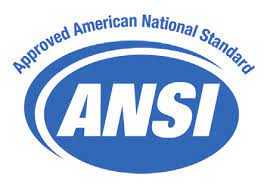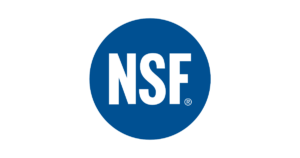It’s crucial to know what standards and water filter certifications to look for when purchasing things for your home. This is particularly true for items used to treat potable water, such water softeners, which can significantly affect the quality of the water you use and ingest.
The NSF/ANSI standards are one collection of water filter certifications that is crucial to comprehend. We’ll get into what these criteria are, what they signify, and why they’re crucial for picking the best water treatment products for your home in this post.
NSF/ANSI Standard Certifications Explained


Drinking Water System Standards in the USA
Clean water is essential for global human health, and the United States has a robust regulatory framework to ensure that it is safe for consumption.
The Safe Drinking Water Act (SDWA), the American National Standards Institute (ANSI), the National Sanitation Foundation (NSF), and Drinking Water Treatment Units (DWTU) are just a few of the standards and accreditations that are included in this framework.
-
Safe Drinking Water Act (SDWA)
The SDWA was passed in 1974 with the intention of preserving public health by governing the country’s public water supply. The Act mandated that public water systems adhere to a set of minimum requirements for the quality of water.
The Environmental Protection Agency (EPA) was made the main regulating body for water in the US under the SDWA. Maximum Contaminant Levels (MCLs) for over 90 pollutants, including microorganisms, disinfectants, disinfection byproducts, and inorganic and organic compounds, are defined by the EPA and are enforced under the National Primary Drinking Water Regulations (NPDWRs).
-
American National Standards Institute (ANSI)
A private, nonprofit organization called the American National Standards Institute (ANSI) creates standards for a variety of goods and services, including the treatment of water. For water treatment equipment including water filters and reverse osmosis systems, ANSI has set standards.
These specifications, sometimes referred to as NSF/ANSI standards, specify performance requirements for these devices and call for stringent testing and certification before they can be offered for sale to consumers.
-
National Sanitation Foundation (NSF)
A nonprofit organization called the National Sanitation Foundation (NSF) creates standards, administers testing, and certifies a variety of items, including water treatment equipment. NSF/ANSI 42 and NSF/ANSI 53 are two standards the NSF has created in relation to water treatment equipment.
These standards specify performance requirements for water treatment equipment and call for stringent testing and certification before they can be offered for sale to consumers.
-
Drinking Water Treatment Units (DWTU)
Drinking Water Treatment Units (DWTU) are appliances that are made to clean water right where it is needed, like on a countertop or under a sink. Reverse osmosis systems, distillers, and water filters are a few examples of these gadgets.
The EPA regulates DWTUs under the SDWA, and before they can be marketed to customers, they must pass stringent testing, satisfy predetermined performance standards, and receive certification.
NSF Standards for Drinking Water Treatment Systems
The NSF has created a number of standards for water filter systems, each with its own requirements and criteria. The many NSF standards for water filter system will be discussed in this article, along with their implications for customers.
NSF/ANSI 42: Aesthetic Effects
A standard called NSF/ANSI 42 focuses on how water treatments look. This standard assesses a system’s capacity to lower pollutants that may have an impact on the flavor, color, and odor of water.
This standard specifies standards for chlorine, chloramines, and particulate matter reduction as well as for taste and odor abatement. This standard is especially important for point-of-use devices like refrigerator and under-sink water filters.
NSF/ANSI 53: Health Effects
A standard called NSF/ANSI 53 focuses on how drinking water filter system affects human health. This standard assesses a system’s capacity to lessen pollutants like lead, cysts, and volatile organic compounds (VOCs) that may be harmful to health.
The requirements of this standard call for the reduction of a variety of contaminants, such as radioactive, chemical, and microbiological contaminants. The point-of-use and point-of-entry systems, such as reverse osmosis units, activated carbon filters, and whole-house water treatment units, are particularly relevant to this standard.
NSF/ANSI 55: Ultraviolet Microbiological Water Treatments
The performance of ultraviolet (UV) microbiological water treatments is the topic of the NSF/ANSI 55 standard. This standard assesses a UV system’s capacity to purify water by rendering bacteria, viruses, and protozoa inactive.
The UV dose, flow rate, lamp intensity, and the system’s efficiency against particular microbes are all specified in this standard. This standard is especially important for UV-based point-of-use and point-of-entry devices including UV sterilizers and UV purification systems.
NSF/ANSI 58: Reverse Osmosis Drinking Water Treatments
The performance of reverse osmosis (RO) drinking water treatments is the topic of the NSF/ANSI 58 standard. This standard assesses a RO system’s capacity to remove a variety of impurities, such as dissolved solids, arsenic, fluoride, lead, and nitrates.
This standard specifies specifications for contaminant removal as well as system performance metrics like rejection and recovery rates. This specification is especially important for point-of-use systems, including RO systems installed under sinks.
NSF/ANSI 62: Drinking Water Distillation Systems
A standard called NSF/ANSI 62 focuses on how well drinking water distillation systems function. This standard assesses a distillation system’s capacity to eliminate several pollutants, such as lead, volatile organic compounds (VOCs), and other inorganic substances.
This standard specifies standards for system performance, such as energy efficiency and distillate production rate, as well as requirements for distillate purity. For point-of-use devices like countertop distillers and under-sink distillers, this criterion is very important.
NSF/ANSI 177: Shower Filtration Systems
A standard called NSF/ANSI 177 is concerned with the effectiveness of shower filtration systems. This standard assesses a shower filtration system’s capacity to lessen pollutants such chlorine, chloramines, and particulates that can degrade the quality of shower water.
In accordance with this guideline, lead, mercury, and other heavy metals that might be present in the water must be reduced as well.
NSF/ANSI 244: Onsite Residential and Commercial Water Reuse Treatment System
The performance of on-site residential and commercial water reuse treatment systems is assessed by the NSF/ANSI 244 standard. These systems are made to clean wastewater so that it can be used for non-potable purposes such as cooling tower makeup, irrigation, and toilet flushing.
Based on their capacity to treat wastewater to levels that are safe for the planned reuse uses, these systems are assessed according to the NSF/ANSI 244 criterion for efficacy. Water reuse treatment systems must show that they are efficient in lowering pollutants like bacteria, viruses, and chemicals to ranges deemed safe for non-potable reuse in order to achieve this requirement.
NSF/ANSI 401: Drinking Water Treatment Units – Emerging Compounds/Incidental Contaminants
The performance of drinking water treatment systems for the contaminant reduction of emerging compounds and incidental contaminants is assessed by the NSF/ANSI 401 standard.
These are toxins that the U.S. Environmental Protection Agency (EPA) does not currently regulate but which may be present in drinking water supplies and may be harmful to human health.
The NSF/ANSI 401 standard assesses how well treatment units perform in terms of eliminating a range of developing compounds and specific health related contaminants, including as medicines, personal care items, insecticides, and other chemicals.
Treatment units must show that they are successful in lowering these contaminants to ranges that are regarded as acceptable for drinking water in order to meet this criteria.
NSF P231: Microbiological Water Purifiers
A methodology called NSF P231 is used to assess how well microbiological water filters work. These are compact, portable appliances that can be used to supply clean water in emergency situations or in locations with restricted access to such resources.
The efficiency of these purifiers in eradicating bacteria, viruses, and other microbes from water is assessed by the NSF P231 methodology. Purifiers must show that they are efficient at lowering these bacteria to concentrations that are regarded as safe for water in order to comply with this protocol.
NSF P477: Microfiltration and Ultrafiltration Membranes
A methodology called NSF P477 is used to assess how well microfiltration and ultrafiltration membranes work in water treatments. These membranes are used to clean water of particulates, bacteria, and other impurities.
The effectiveness of these membranes is assessed according to the NSF P477 protocol based on a number of criteria, such as their softening capacity to filter out impurities from water, their longevity and resistance to fouling, and their overall efficiency in preserving water quality over time.
NSF P473: Drinking Water Treatment Chemicals – Activated Carbon
The effectiveness of activated carbon employed in water treatment systems is assessed using the NSF P473 technique. Chlorine, byproducts of disinfection, and organic compounds are among the pollutants that activated carbon is frequently used to remove from water.
The NSF P473 protocol assesses the durability and fouling resistance of activated carbon as well as how successfully it removes these impurities from water.
Activated carbon must show that it is efficient at lowering these contaminants to concentrations that are regarded as safe for drinking water and that it can sustain this level of performance over time in order to comply with this procedure.
NSF/JWPA P72: Microbiological Water Treatment Systems – Drinking Water Treatment Units
A Japanese standard that is also acknowledged internationally is NSF/JWPA P72. The goal of this standard, which is applied to UV microbiological water treatments, is to confirm that these systems are effective in removing microbiological contaminants.
It defines standards for the components and materials used in UV treatments as well as the procedures for testing and certifying these systems.
According to the results of testing and certification of carbon block/activated carbon, ion exchange, and reverse osmosis systems, systems that use absorptive activated carbon media to reduce iodine are required in the US under the NSF standard 42 for reducing aesthetic effects or standard 53 for reducing health effects.
Reverse osmosis water systems must also satisfy NSF standard 58 stringent requirements in order to be certified. It’s vital to remember that water systems cannot receive their certification through the NSF/JWPA P72 alone.
How Manufacturers Achieve NSF Standards Certification
Manufacturing facilities who produce products used in the treatment of water are increasingly seeking certification from NSF International.
NSF certified is widely recognized in the industry and demonstrates a product’s compliance with industry standards for safety, performance, and quality. In this article, we will take a closer look at the process manufacturing facilities go through to achieve NSF standards certification.
- Step 1: Preliminary testing
Manufacturers must perform preliminary testing to make sure their product complies with the standards and certification criteria of the relevant NSF standard before submitting an application for certification.
This testing can be carried either internally or by a different laboratory. NSF International must receive thorough product specifications and test data from the manufacturer.
- Step 2: Application submission
The manufacturer can submit an application for NSF certification once the initial testing is finished. The application contains comprehensive product details, including product specifications, test findings, and manufacturing procedures.
To make sure the application is accurate and complies with the relevant standard’s requirements, NSF International reviews it.
- Step 3: Facility inspection
To ensure that the product is produced in accordance with the relevant standard, NSF International conducts a thorough examination of the manufacturing plant. The inspection entails a study of the production processes, quality control protocols, and manufacturing process documentation.
- Step 4: Testing and evaluation
To ensure that the product satisfies the requirements of the relevant standard, NSF International tests and evaluates it. In this testing, material analysis, product performance testing, and laboratory analysis are all included. To make sure the product complies with the standard’s standards, it is assessed against predetermined performance criteria.
- Step 5: Certification issuance
NSF International awards a certification if the product successfully completes all testing and evaluation. The NSF mark can be used by the manufacturer to show that their product complies with the requirement. In order to maintain certification compliance, the certification must be renewed on a regular basis.
Benefits of NSF International Certification
For producers, proving that they earn NSF certifications has several advantages. Consumers, government officials, and other stakeholders can see that a product has earned NSF certification by seeing that it has been independently verified to meet the highest standards of quality and safety.
Additionally, it gives businesses a competitive edge in the market because customers are more inclined to select goods that have received certification from an unaffiliated third party.
The highest criteria of performance, safety, and quality must be met by manufacturers in order to pass the rigorous NSF certification procedure. Manufacturers can become certified and show their dedication to creating high-quality consumer products that satisfy regulators’ and consumers’ expectations by completing the above-described steps.
Evaluating Competitive Consumer Products Using NSF Certification
For individuals trying to select the best water treatment alternatives, NSF standards have become increasingly significant. But it’s crucial to think about your filtration goals before you start looking for the best water filtration system.
It will be challenging to choose the filter that would work best for you without understanding whatever toxins are in your water source. It’s crucial to consider additional elements that may have an impact on a filter’s performance, like flow rate and filter capacity.
While an NSF certification may provide consumers confidence in a product’s claims to be able to eliminate impurities, it’s crucial to keep in mind that systems can vary in terms of toughness, filter life, and structural integrity. Finding out precisely which particular contaminants the filter is certified to eliminate requires investigation, so do that now.
The use of phrases like “tested to NSF standards” or “meets NSF standards” in marketing materials should be avoided. These claims could give the impression that the water filter has NSF certification while in reality it has merely undergone internal testing by the manufacturer or a contractor they contracted to do so.
Because of this, it’s crucial to avoid being duped by these claims and to confirm a product’s NSF certification using the NSF’s certification database.
Additionally, manufacturers must adhere to a rigorous procedure to receive NSF standards certification. An assessment of the product, including its composition and design, is part of this process. In order to confirm that the product complies with the necessary requirements, the manufacturer must additionally provide samples of the product for testing by a separate laboratory.
To make sure the product is reliable and safe for use in treating drinking water, this testing may comprise a variety of tests, such as performance testing and material safety testing.
NSF/ANSI 42, which establishes criteria for decreasing aesthetic effects in drinking water, such as taste and odor, is one of the main NSF standards for water treatment systems. NSF/ANSI 53 is a significant standard that focuses on minimizing the negative health impacts of pollutants in drinking water.
Systems should also meet NSF/ANSI 42 or 53 for adsorptive media filters and NSF/ANSI 58 for reverse osmosis filters.
For water treatment systems, NSF also has a number of other standards, such as NSF/ANSI 177 for shower filtration systems, NSF/ANSI 244 for direct water systems, NSF/ANSI 401 for emerging compounds and incidental contaminants, NSF P231 for bacteria removal and reduction, NSF P477 for emerging pharmaceutical compounds and personal care products, and NSF P473 for PFOA and PFOS reduction.
To make sure the product satisfies the requirements for your purposes, it is crucial to grasp the precise standards that apply to it.
NSF standards are a crucial tool for selecting the best water treatment system, to sum up. However, it’s crucial to consider all pertinent elements, such as filtering goals, and to do thorough research on particular items to make sure they adhere to the required criteria.
By doing this, you can make sure that the item you are purchasing is secure, efficient, and satisfies your particular requirements.
Frequently Asked Questions
Q: What is NSF/ANSI Standard Certification for Water?
A: NSF/ANSI Standards are a set of independent, third-party standards that evaluate and certify water treatment and filtration products for their ability to remove or reduce specific contaminants.
Q: Why is NSF/ANSI certification important for water systems?
A: NSF/ANSI certification provides assurance that the water system you’re using is effective at removing or reducing specific contaminants, ensuring that your water is safe to drink. It also helps consumers compare different filtration products based on their specific filtration needs.
Q: What contaminants do NSF/ANSI standards address?
A: The NSF/ANSI Standards address a variety of contaminants, including lead, cysts, bacteria, viruses, and other harmful substances that can be found in tap water.
Q: Can a product be certified for multiple NSF/ANSI standards?
A: Yes, a product can be certified for multiple NSF/ANSI standards if it meets the requirements for each standard.
Q: What is the process for getting NSF/ANSI certification?
A: Manufacturers can apply for NSF/ANSI certification by submitting their products for testing and evaluation by an independent, third-party certifier. The certifier will test the product to ensure that it meets the requirements for the specific NSF/ANSI standard.
Q: Is NSF/ANSI certification required for tap water systems?
A: No, NSF/ANSI certification is not required for tap water systems, but it is highly recommended as it provides assurance that the system is effective at removing or reducing specific contaminants.
Q: How can I verify that a product is NSF/ANSI certified?
A: You can verify that a product is NSF/ANSI certified by checking the NSF’s certification catalog, which lists all products that have been independently certified by NSF.
Q: Is there a cost for NSF/ANSI certification?
A: Yes, there is a cost for NSF/ANSI certification, which varies depending on the product and the specific NSF/ANSI standard being certified. The cost covers the testing and evaluation process conducted by the independent, third-party certifier.
